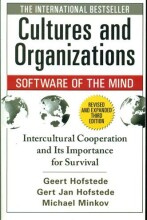Summary The Economics Of Money Banking And Financial Markets Chapter 1 25 (1)
- This + 400k other summaries
- A unique study and practice tool
- Never study anything twice again
- Get the grades you hope for
- 100% sure, 100% understanding
Read the summary and the most important questions on summary the economics of money banking and financial markets chapter 1 25 (1)
-
1 2 Contractual savings institutions: These are institutions, such as insurance
This is a preview. There are 1 more flashcards available for chapter 1
Show more cards here -
What are some examples of financial intermediaries that acquire funds at periodic intervals on a contractual basis?
- LIFE INSURANCE COMPANIES: Insure individuals against financial hazards following death and offer annuities for retirement income.
- FIRE AND CASUALTY INSURANCE COMPANIES: Insure against loss from theft, fire, and accidents.
- PENSION FUNDS AND GOVERNMENT RETIREMENT FUNDS: Provide retirement income through annuities for employees under pension plans. -
3 Chapter 3 What is money? A comparative approach to measuring money
This is a preview. There are 80 more flashcards available for chapter 3
Show more cards here -
Differentiate between commodity money and fiat money.
- Commodity money: precious metals or valuable commodity
- Fiat money: paper currency decreed by governments -
What are monetary aggregates?
- Variations in definitions of money supply due to different norms, financial instruments, issuers -
What are the components of M1, the narrowest measure of money?
- Currency in circulation
- Demand deposits
- Other checkable deposits held in depository institutions -
What additional components does M2 include compared to M1?
- Savings deposits
- Most time deposits
- Money market mutual fund shares -
What components are added to M2 to calculate M3, a broader measure of money?
- Repurchase agreements
- MMF shares/units
- Debt securities up to 2 years -
Why is it important to choose the most accurate monetary aggregate?
- Obtaining a single precise, correct measure matters
- The chosen aggregate affects policymakers and economists
- It determines the true measure of money -
What factors lead to an increase in the demanded quantity of an asset, according to the theory of asset demand?
- An increase in wealth
- An increase in the asset's expected return relative to an alternative asset
- A decrease in the risk compared to an alternative asset
- The asset being more liquid relative to an alternative asset -
What does the demand curve in the bond market show?
- The relationship between the quantity demanded and the price of a bond
- As interest rates decrease, bond prices increase, leading to a decrease in demand -
What does the supply curve in the bond market show?
- The relationship between the quantity supplied and the price of a bond
- As interest rates decrease, bond prices increase, making it more attractive for sellers
- Higher grades + faster learning
- Never study anything twice
- 100% sure, 100% understanding

































